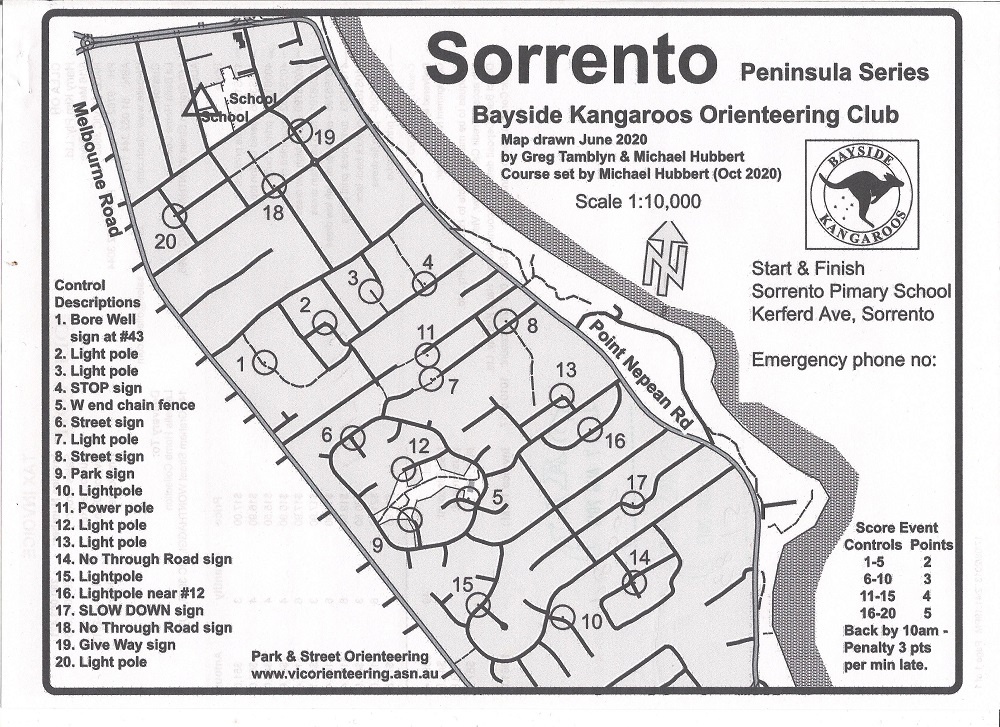Park and Street Orienteering
Park and street orienteering is a fun way to exercise your body and get fit, and exercise your mind and practise your orienteering skills. Enjoy an evening stroll or a more strenuous challenge. It is open to walkers, joggers and runners.
All Park and Street Orienteering events welcome people of all ages and abilities. There is a range of courses that accommodate both the elite sportsperson, right through to people who are just looking for a good walk to help stay fit and healthy.
You can be as competitive or as casual as you like. Park and Street Orienteering is a suburban version of Bush Orienteering. It can be done as an individual or in groups of 2 or more, and you can choose which course and whether to walk or run.
Walkers Course – For the walker’s course, you visit as many control points in any order you choose within one hour. Walkers MUST walk at all times. Running or jogging is not allowed, and there will be a penalty. There is also a penalty if you arrive late.
Runners Course – for the runner’s course, you visit the control points in number order within one hour. There is also a penalty if you arrive late. Runners’ course may run/or walk.
Street and Park Orienteering is enjoyed by hundreds of people of all ages and abilities, from toddlers to eighty-something, from elite athletes to social strollers.
How Park Street Orienteering Works
When you arrive: Each participant chooses a course that suits them and is given some simple instructions and a control card used to record the control points. You fill in the control card and pay your entry fee.
The Map: Just before the start, each participant receives a map with 20-25 pre-marked control points and a briefing about the course. The map shows you where the control points are, where you can and can’t go, and details about the event. The map is black and white, A4-sized, and at a scale of 1:10,000. They are similar but more accurate than a Street Directory or Google map, and they can show contours.
Example Map
Here is an example Street-O map. The maps are always printed in Black & White. The start is marked as a triangle, each Control Point is a circle with the corresponding control number.

Control Points: Control points are positioned on features such as light poles, fences, or trees. When you visit a control point, you need to punch the corresponding square on your control card as proof that you went there. It’s up to you to decide which control points to go to and in which order. It’s a challenge to quickly try to figure out the most optimal route!
The Start: Everyone starts at the same time. When the “Go” signal is given, turn over your map and begin your course.
The Finish: You must return to the finish within a set time, or after locating a designated number of control points and hand in your control card.
All participants MUST report to the Finish, whether they completed the course or not, for safety reasons.
What you need to bring
You don’t need a lot of gear to go Park Street Orienteering.
- comfortable running/walking clothes/shoes and extra clothing to change into after finishing if preferred.
- watch/GPS/phone to tell how much time you have left
- torch/head torch for winter and night events. Reflective clothing is recommended.
- water bottle (post-run or extra-long events)
- A compass is optional.
Most events run as a series for which a season ticket is offered at a greatly reduced price. Casual entry is also available where you pay on the day. You can attend as often as you wish.
Park Street orienteering participants should always exercise care when crossing streets to avoid accidents and causing issues that could lead to complaints. You also must not go through properties, gardens, or any area marked as out-of-bounds on the map.
Frequently asked questions
Can I bring a pram? Absolutely.
Do I need a torch? For the winter events, yes. Summer events, no.
How long does it take? Most people take about 45 minutes to complete the 1-hour course. There is a time limit of 1 hour for all courses.
Do I need a compass? No. Most people don’t use a compass.
